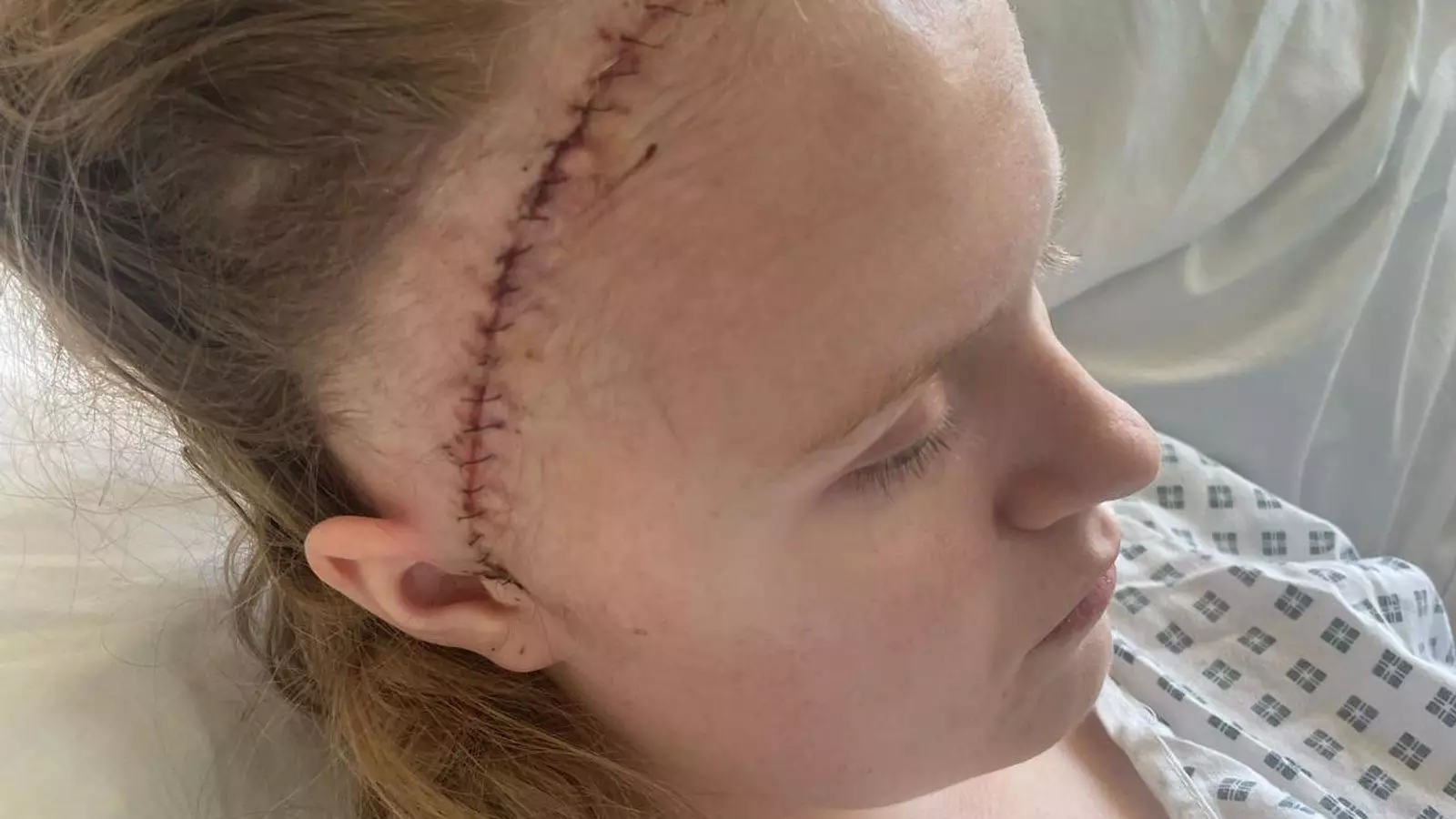In a staggering display of resilience, 16-year-old Ellie Morris-Davies symbolizes the unbreakable spirit inherent in youth. Diagnosed with a cavernoma, a rare cluster of abnormal blood vessels in the brain that often remains symptomless, Ellie’s journey illuminates the darker corners of medical neglect surrounding seemingly innocuous health conditions. During her ordeal, Ellie encountered a series of debilitating symptoms—persistent headaches, nausea, and hypersensitivity to light—which escalated to alarming levels. The sheer randomness of her condition raises uncomfortable questions: why are such life-threatening conditions often overlooked, relegated to the realm of misdiagnosis, or dismissed as mere migraines?
Ellie’s story resonates deeply not only as a family’s medical saga but also as a glaring reminder of systemic failures in recognizing rare diseases. While it is tempting to consider these situations as merely unfortunate accidents, they serve as a dark reflection of a healthcare system that often overlooks rare conditions until they manifest in catastrophic ways. A cavernoma poses a silent threat—abundant but largely unrecognized—and Ellie’s struggle highlights a crucial need for increased awareness and understanding within both the medical community and the general public.
From Hospital to Hope: A Grueling Recovery Journey
After her initial diagnosis, Ellie found herself ensnared in an intense whirlwind of surgeries—nine in just thirteen weeks. The audacity of medical professionals who opted for unconventional solutions, such as storing part of her skull in her abdomen, exemplifies both the ingenuity and desperation of modern medicine. However, this dramatic approach to treatment should lead us to interrogate broader issues surrounding patient care and safety. How do we justify risking such significant procedures amidst the uncertainties of recovery? Herein lies the complex ethical fabric that governs healthcare—choices made in the name of survival that, in less fortunate circumstances, could tip over into grounds for tragic outcomes.
Despite the gravity of her situation, Ellie’s unwavering determination shone through. Her recovery involved daily physiotherapy sessions, often disguised as a grueling battle to regain abilities many take for granted—a stark reminder that simple actions like walking, speaking, and eating can hinge on the precariousness life throws one’s way. It is vital to acknowledge not only her physical struggle but also the emotional hurdles she faces. Overcoming such hurdles shouldn’t just be framed as triumph; there is raw emotion tied to the fear and frustration that accompanies gradual healing, especially when the road seems endless.
A Dance with Destiny: The Power of Community Support
Ellie’s journey underscores the immense role of community in recovery. The unwavering support from her mother, Joanne, has been paramount in propelling Ellie forward. It is a poignant reminder of the familial bonds that often carry the weight of illness, creating an intricate tapestry woven with love, fear, and hope. Without Joanne’s relentless advocacy and emotional support, Ellie’s path might have diverged into darker territories. We must ponder: how essential is family support in overcoming monumental life challenges?
Additionally, Ellie’s return to the stage signifies not just a personal milestone but also reinforces the idea that recovery transcends mere physical healing; it encompasses a restoration of identity. The arts, particularly dance, allow individuals to reclaim their sense of self. As Ellie stepped back into the spotlight, her memory of life pre-cavernoma returned with a vengeance—a powerful narrative that mirrors the experiences of many battling similar tribulations.
Facing the Future with Tenacity
Ellie’s journey from despair to resilience speaks volumes about her indomitable spirit and relentless drive to reclaim her life. She captures the essence of hope—an ember that refuses to be extinguished even in the darkest hours. Yet, alongside her inspiring rehabilitation story emerges an urgent call to action: for the medical community to bolster their understanding of rare conditions, ensuring that future patients experience swift diagnosis and appropriate treatment.
There’s an implicit responsibility for society to not only marvel at tales like Ellie’s but to turn admiration into advocacy. Resources and time must be allocated toward understanding rare diseases and creating improved protocols, minimizing the risk of what almost happened to Ellie. The synergy of youth, family, medical professionals, and societal awareness gathers power in the face of adversity, potentially transforming tragic occurrences into tales of hope. And that is the legacy Ellie Morris-Davies deserves.

